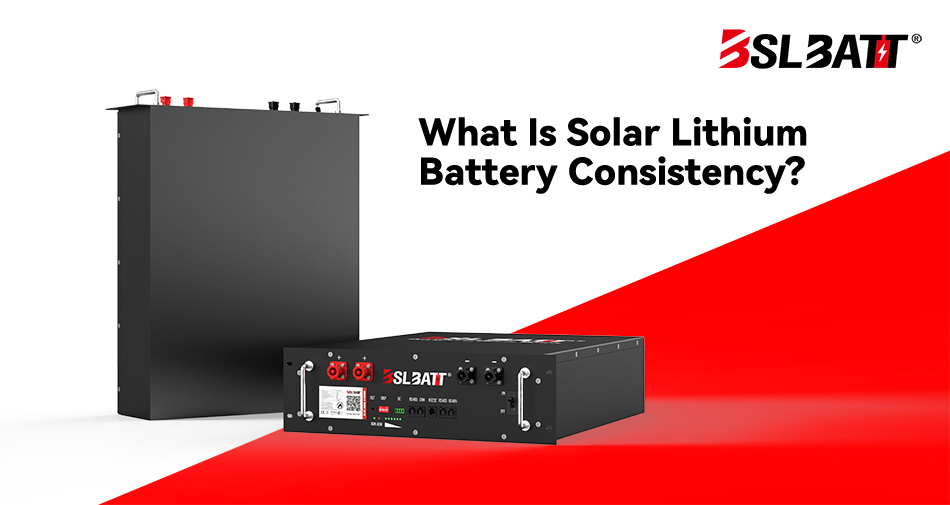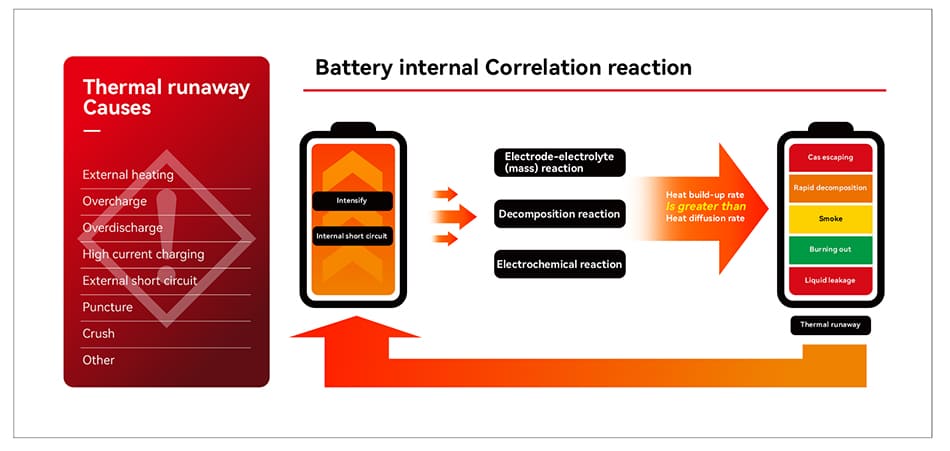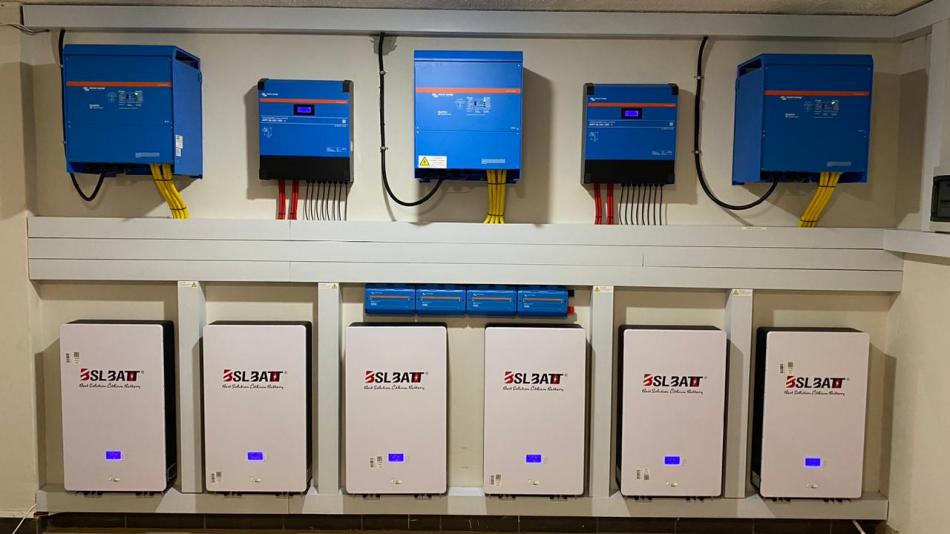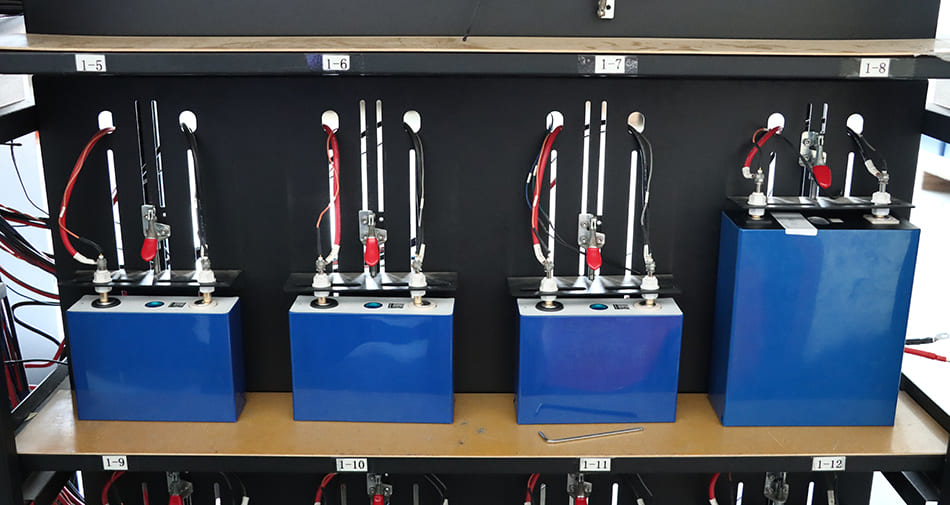Solar lithium battery is the key component of solar energy storage system, the performance of lithium battery is one of the key elements to determine the performance of battery energy storage system.
The development of solar lithium battery technology has been to control costs, improve the energy density and power density of lithium batteries, enhance the use of safety, extend the service life and improve the consistency of the battery pack, etc. as the main axis, and the enhancement of these elements is still the lithium battery is currently facing the biggest challenge. This is mainly due to the group of single cell performance and use of the operating environment (such as temperature) there are differences, so that the performance of solar lithium batteries is always lower than the worst single cell in the battery pack.
The inconsistency of single cell performance and operating environment not only reduces the performance of the solar lithium battery, but also affects the accuracy of the BMS monitoring and the safety of the battery pack. So what are the reasons for the inconsistency of solar lithium battery?
What is Lithium Solar Battery Consistency?
Lithium solar battery battery pack consistency means that the voltage, capacity, internal resistance, lifetime, temperature effect, self-discharge rate and other parameters remain highly consistent without much difference after the same specification model of single cells form a battery pack.
Lithium solar battery consistency is critical to ensure uniform performance, reduce risk and optimize battery life.
Related reading: what are the hazards that inconsistent lithium batteries can bring?
What Causes The Inconsistency of Solar Lithium Batteries?
Battery pack inconsistency often causes solar lithium batteries in the cycling process, such as excessive capacity degradation, shorter life and other problems. There are many reasons for the inconsistency of solar lithium batteries, mainly in the manufacturing process and the use of the process.
1. Differences in parameters between lithium iron phosphate single batteries
The state differences between lithium iron phosphate monomer batteries mainly include the initial differences between monomer batteries and the parameter differences generated during the use process. There are a variety of uncontrollable factors in the process of battery design, manufacturing, storage and use that can affect the consistency of the battery. Improving the consistency of individual cells is a prerequisite for improving the performance of battery packs. The interaction of lithium iron phosphate single cell parameters, the current parameter state is affected by the initial state and the cumulative effect of time.
Lithium iron phosphate battery capacity, voltage and self-discharge rate
Lithium iron phosphate battery capacity inconsistency will make the battery pack of each single cell discharge depth inconsistent. Batteries with smaller capacity and poorer performance will reach the full charge state earlier, causing batteries with large capacity and good performance to fail to reach the full charge state. Lithium iron phosphate battery voltage inconsistency will lead to parallel battery packs in the single cell charging each other, the higher voltage battery will give the lower voltage battery charging, which will accelerate the battery performance degradation, the loss of the energy of the entire battery pack. Large self-discharge rate of the battery capacity loss, lithium iron phosphate battery self-discharge rate inconsistency will lead to differences in the battery charge state, voltage, affecting the performance of the battery pack.
Internal resistance of single lithium iron phosphate battery
In the series system, the difference in internal resistance of single lithium iron phosphate battery will lead to inconsistency in charging voltage of each battery, the battery with large internal resistance reaches the upper voltage limit in advance, and other batteries may not be fully charged at this time. Batteries with high internal resistance have high energy loss and generate high heat, and the temperature difference further increases the difference in internal resistance, leading to a vicious cycle.
Parallel system, the internal resistance difference will lead to the inconsistency of each battery current, the current of the battery voltage changes quickly, so that the depth of charge and discharge of each single battery is inconsistent, resulting in the actual capacity of the system is difficult to reach the design value. Battery operating current is different, its performance in the use of the process will produce differences, and ultimately will affect the life of the entire battery pack.
2. Charging and discharging conditions
The charging method affects the charging efficiency and charging state of the solar lithium battery pack, overcharging and over-discharging will damage the battery, and the battery pack will show inconsistency after many times of charging and discharging. At present, there are several charging methods for lithium-ion batteries, but the common ones are segmented constant-current charging and constant-current constant-voltage charging. Constant current charging is a more ideal way to carry out safe and effective full charging; constant current and constant voltage charging effectively combines the advantages of constant current charging and constant voltage charging, solving the general constant current charging method is difficult to accurately full charging, avoiding the constant voltage charging method in the charging of the early stage of the current is too large for the battery to cause the impact of the operation of the battery, simple and convenient.
3. Operating temperature
The performance of solar lithium batteries will be significantly degraded under high temperature and high discharge rate. This is because the lithium-ion battery in high temperature conditions and high current use, will cause cathode active material and electrolyte decomposition, which is the exothermic process, a short period of time, such as the release of heat can lead to the battery’s own temperature rises further, and higher temperatures accelerate the decomposition phenomenon, the formation of a vicious circle, accelerated decomposition of the battery to further decline in performance. Therefore, if the battery pack is not properly managed, it will bring irreversible performance loss.
Solar lithium battery design and use of environmental differences will cause the temperature environment of the single cell is not consistent. As shown by Arrhenius’ law, the electrochemical reaction rate constant of a battery is exponentially related to the degree, and the electrochemical characteristics of the battery are different at different temperatures. Temperature affects the operation of the battery electrochemical system, Coulombic efficiency, charging and discharging capability, output power, capacity, reliability, and cycle life. Currently, the main research is carried out to quantify the effect of temperature on the inconsistency of battery packs.
4. Battery external circuit
Connections
In a commercial energy storage system, lithium solar batteries will be assembled in series and parallel, so there will be many connecting circuits and control elements between the batteries and modules. Due to the different performance and aging rate of each structural member or component, as well as the inconsistent energy consumed at each connection point, different devices have different effects on the battery, resulting in an inconsistent battery pack system. Inconsistencies in the rate of battery degradation in parallel circuits can accelerate the deterioration of the system.
Connection piece impedance will also have an impact on the inconsistency of the battery pack, the connection piece resistance is not the same, the pole to the single cell branch circuit resistance is different, away from the pole of the battery due to the connection piece is longer and the resistance is larger, the current is smaller, the connection piece will make the single cell connected to the pole will be the first to reach the cut-off voltage, resulting in a reduction in the utilization of energy, affecting the performance of the battery, and the single cell aging ahead of time will lead to over-charging of the connected battery, resulting in safety and security of the battery. The early aging of the single cell will lead to overcharging of the battery connected to it, resulting in potential safety hazards.
As the number of battery cycles increases, it will cause the ohmic internal resistance to increase, capacity degradation, and the ratio of the ohmic internal resistance to the resistance value of the connecting piece will change. To ensure the safety of the system, the influence of the resistance of the connecting piece must be considered.
BMS Input Circuitry
Battery management system (BMS) is the guarantee of normal operation of battery packs, but the BMS input circuit will adversely affect the consistency of the battery. Battery voltage monitoring methods include precision resistor voltage divider, integrated chip sampling, etc. These methods cannot avoid sampling line off-load leakage current due to the presence of resistor and circuit board paths, and the battery management system voltage sampling input impedance will increase the inconsistency of the battery state of charge (SOC) and affect the performance of the battery pack.
5. SOC estimation error
SOC inconsistency is caused by the inconsistency of the initial nominal capacity of a single cell and the inconsistency of the nominal capacity decay rate of a single cell during operation. For parallel circuit, the difference of internal resistance of single cell will cause uneven current distribution, which will lead to the inconsistency of SOC. SOC algorithms include ampere-time integration method, open-circuit voltage method, Kalman filtering method, neural network method, fuzzy logic method, and discharge test method, etc. The SOC estimation error is due to the inconsistency of initial nominal capacity of single cell and the inconsistency of nominal capacity decay rate of single cell during operation.
The ampere-time integration method has better accuracy when the SOC of the starting charge state is more accurate, but the Coulombic efficiency is greatly affected by the state of charge, temperature and current of the battery, which is difficult to be measured accurately, so it is difficult for the ampere-time integration method to meet the accuracy requirements for the estimation of the charge state. Open-circuit voltage method After a long period of resting, the open-circuit voltage of the battery has a definite functional relationship with the SOC, and the estimated value of SOC is obtained by measuring the terminal voltage. The open-circuit voltage method has the advantage of high estimation accuracy, but the disadvantage of long resting time also limits its use.
How To Improve Lithium Solar Battery Consistency?
Improve the consistency of solar lithium batteries in the production process:
Before the production of solar lithium battery packs, it is necessary to sort lithium iron phosphate batteries to ensure that the individual cells in the module use uniform specifications and models, and to test the voltage, capacity, internal resistance, etc. of individual cells to ensure the consistency of the initial performance of solar lithium battery packs.
Control of use and maintenance process
Real-time monitoring of the battery using BMS: Real-time monitoring of the battery during the use process can be observed in real time to the consistency of the use process. Try to ensure that the operating temperature of the solar lithium battery is kept within the optimal range, but also try to ensure the consistency of temperature conditions between batteries, so as to effectively ensure the consistency of performance between the batteries.
Adopt a reasonable control strategy: minimize the battery discharge depth as much as possible when the output power is allowed, in BSLBATT, our solar lithium batteries are usually set to a discharge depth of no more than 90%. At the same time, avoiding overcharging of the battery can extend the cycle life of the battery pack. Strengthen the maintenance of the battery pack. Charge the battery pack with small current maintenance at certain intervals, and also pay attention to cleaning.
Final Conclusion
The causes of battery inconsistency are mainly in the two aspects of battery manufacturing and use, the inconsistency of Li-ion battery packs often cause the energy storage battery to have too fast capacity degradation and shorter life span during the cycling process, so it is very important to ensure the consistency of solar lithium batteries.
Similarly, it is also very important to choose professional solar lithium battery manufacturers and suppliers, BSLBATT will test the voltage, capacity, internal resistance and other aspects of each LiFePO4 battery before each production, and keep each solar lithium battery with high consistency by controlling it in the production process. If you are interested in our energy storage products, contact us for the best dealer price.
Post time: Sep-03-2024













